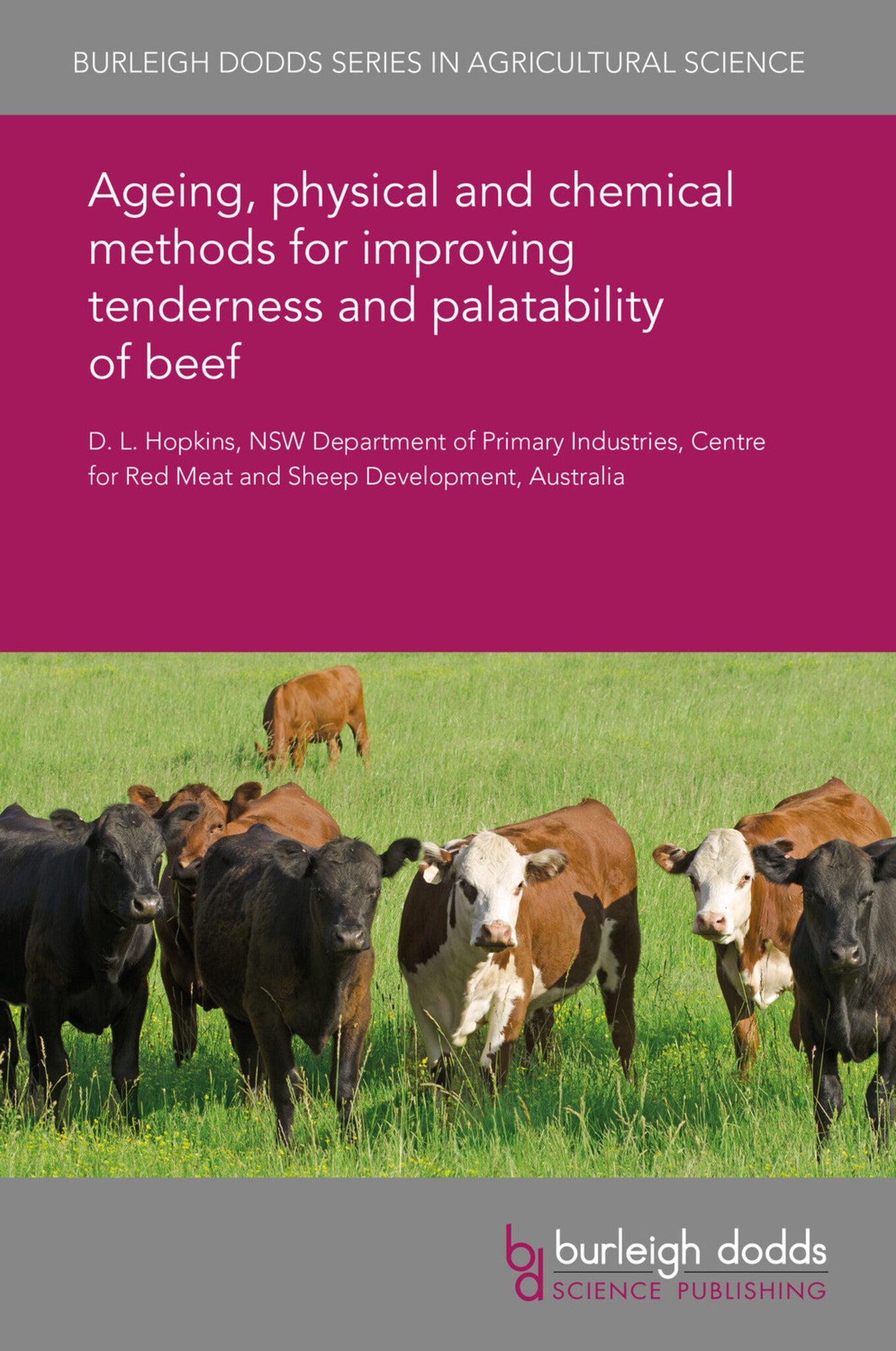We're sorry. An error has occurred
Please cancel or retry.
Ageing, physical and chemical methods for improving tenderness and palatability of beef
Regular price
£25.00
Sale price
£25.00
Regular price
£25.00
Unit price
/
per
Sale
Sold out
Re-stocking soon
The biochemical understanding of tenderization has helped in the design of more targeted approaches to improve beef tenderness through the utilization of specific enzymes. There has also been devel...
Read More

Some error occured while loading the Quick View. Please close the Quick View and try reloading the page.
Couldn't load pickup availability
- Format:
-
31 July 2016

The biochemical understanding of tenderization has helped in the design of more targeted approaches to improve beef tenderness through the utilization of specific enzymes. There has also been development of technologies such as SmartStretch™ and the Pi-Vac Elasto-Pack System®, which offer industry scope to improve the tenderness of specific muscles, and there is scope to combine technologies as these techniques have the potential to reduce the time required to age beef to reach acceptability thresholds. Other technologies such as pulse electric field and high-pressure processing may have specific application in the future, but scaling up the technology is a significant challenge. To meet consumer demands, grading systems that go to the cut and even muscle level are required so that the inherent variation within and between carcasses can be accounted for and value maximized.

Price: £25.00
Publisher: Burleigh Dodds Science Publishing
Imprint: Burleigh Dodds Science Publishing
Series: Burleigh Dodds Series in Agricultural Science
Publication Date:
31 July 2016
ISBN: 9781838790424
Format: eBook
BISACs:
TECHNOLOGY & ENGINEERING / Agriculture / General, Agricultural science, TECHNOLOGY & ENGINEERING / Agriculture / Animal Husbandry, TECHNOLOGY & ENGINEERING / Agriculture / Sustainable Agriculture, Sustainable agriculture, Organic farming, Animal breeding

1 Introduction
2 Ageing of beef products
3 Physical methods to improve eating quality: carcass methods
4 Physical methods to improve eating quality: primal methods
5 Chemical methods to improve eating quality
6 Conclusions
7 Where to look for further information
8 References



